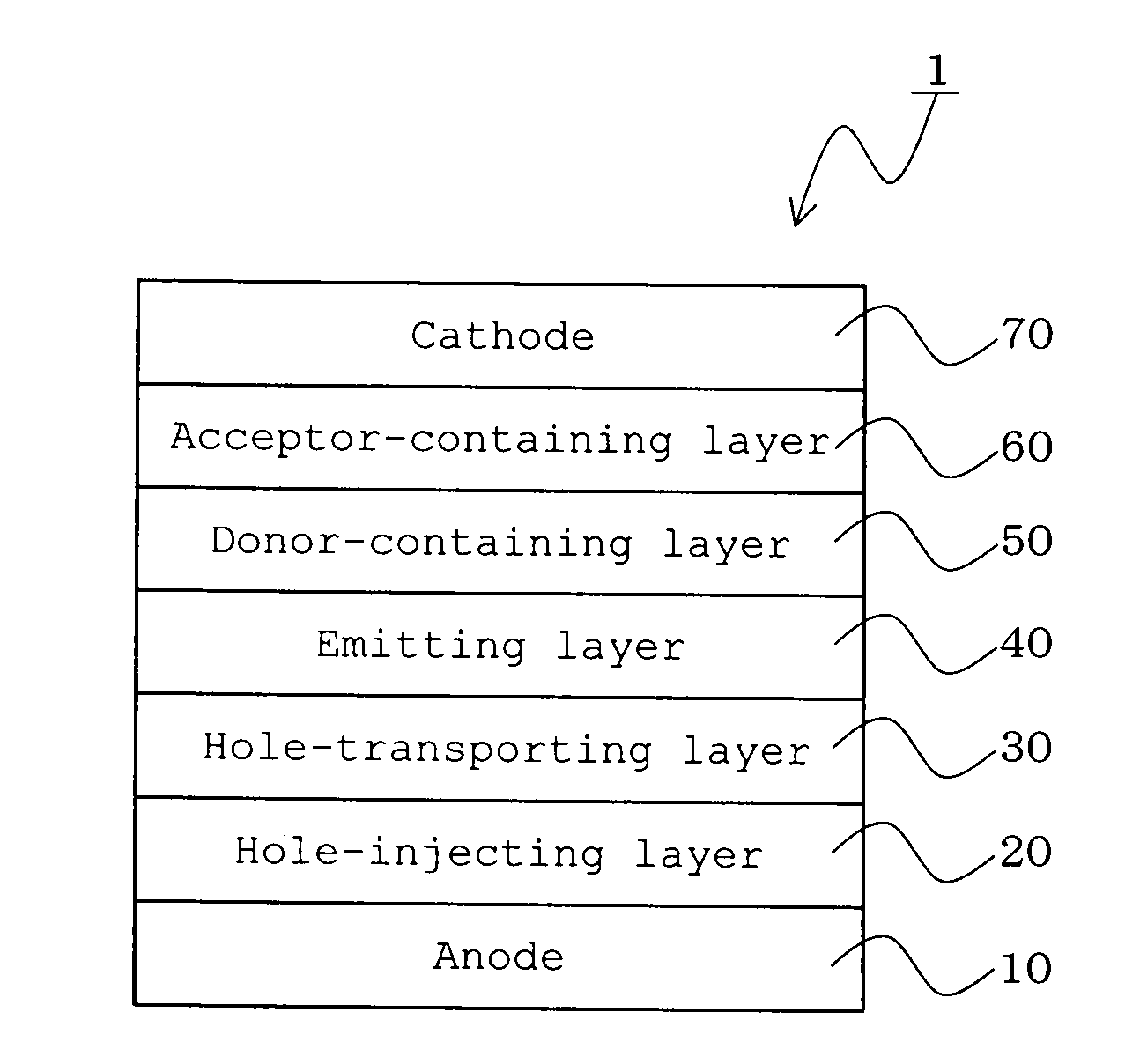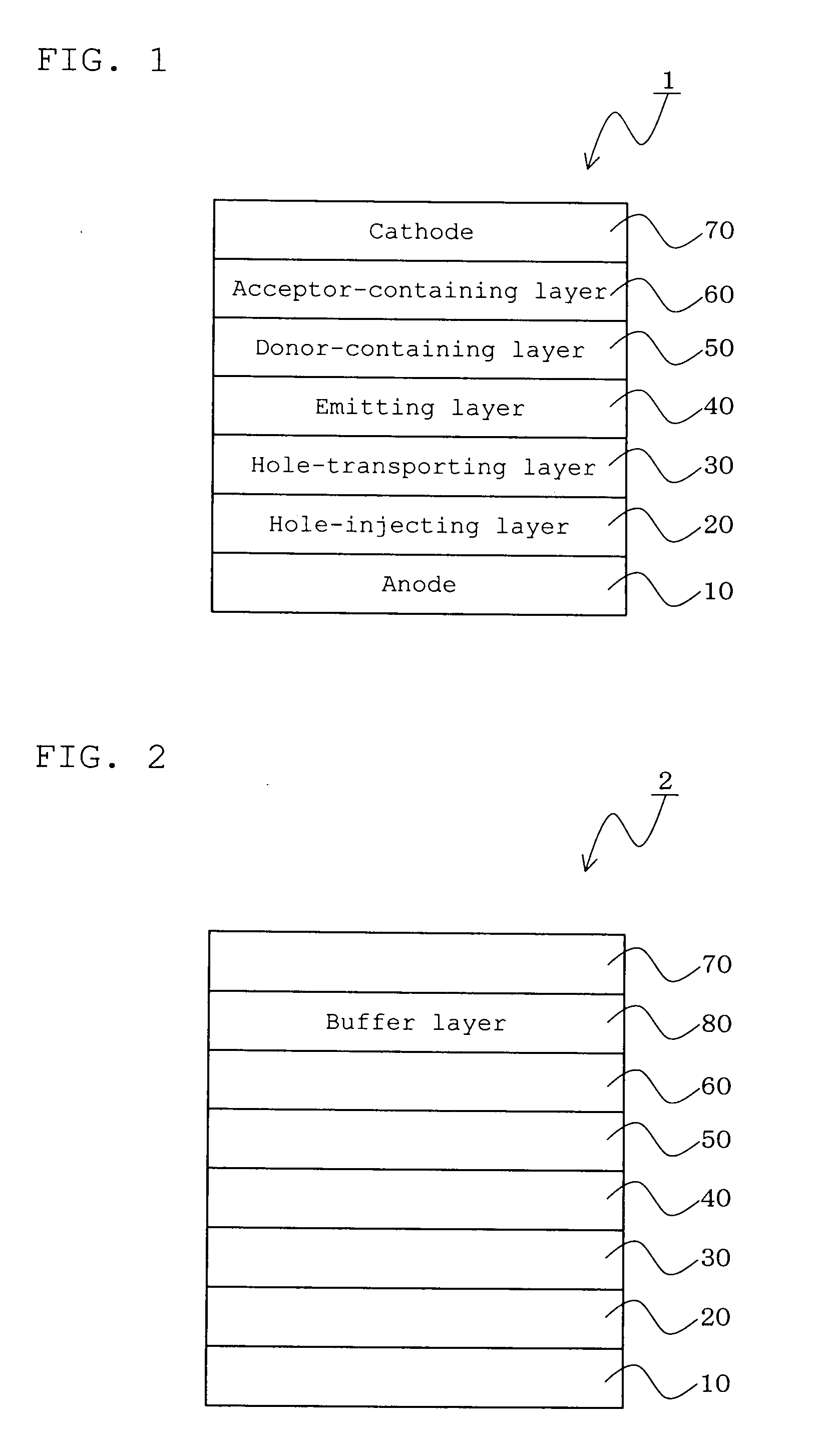Organic light-emitting device
a light-emitting device and organic technology, applied in the direction of discharge tube luminescnet screen, discharge tube/lamp details, electric discharge lamps, etc., can solve the problems of large difference in affinity level between the n the p-type organic compound layer, and achieve satisfactory emission. , the effect of reducing power consumption, long life and high efficiency
- Summary
- Abstract
- Description
- Claims
- Application Information
AI Technical Summary
Benefits of technology
Problems solved by technology
Method used
Image
Examples
example 1
[0095]An ITO film was formed on a 0.7 mm-thick glass substrate by sputtering in a thickness of 130 nm. The substrate was subjected to ultrasonic cleaning in isopropyl alcohol for 5 minutes, and cleaned with ultraviolet ozone for 30 minutes. Then, the substrate with the ITO electrode was mounted on a substrate holder in a vacuum vapor deposition apparatus.
[0096]TPD232 as a material for a hole-injecting layer, TBDB as a material for a hole-transporting layer, BH as a host material for an emitting layer, BD as a blue emitting material, Alq as an electron-transporting material, Li as a donor, (CN)2TCNQ as an acceptor and Al as a cathode material were mounted on respective molybdenum heating boats in advance.
[0097]First, a TPD232 film which functioned as the hole-injecting layer was formed in a thickness of 60 nm. After forming the hole-injecting layer, a TBDB film which functioned as the hole-transporting layer was formed in a thickness of 20 nm. Then, the compound BH and the compound B...
example 2
[0099]An organic light-emitting device was fabricated in the same manner as in Example 1, except that, in Example 1, the donor-containing layer (light transmittance: 90%, specific resistance: 1014 Ω·cm) was formed by using Liq as the donor instead of Li.
[0100]Evaluation was conducted for the resulting organic light-emitting device. The results are shown in Table 1.
example 3
[0101]An organic light-emitting device was fabricated in the same manner as in Example 2, except that, in Example 1, after formation of the acceptor layer, a 10 nm-thick buffer layer was formed using MoOx (x=2 to 3) as a material for a buffer layer, followed by the formation of an Al film (cathode).
[0102]Evaluation was conducted for the resulting organic light-emitting device. The results are shown in Table 1.
PUM
 Login to View More
Login to View More Abstract
Description
Claims
Application Information
 Login to View More
Login to View More - R&D
- Intellectual Property
- Life Sciences
- Materials
- Tech Scout
- Unparalleled Data Quality
- Higher Quality Content
- 60% Fewer Hallucinations
Browse by: Latest US Patents, China's latest patents, Technical Efficacy Thesaurus, Application Domain, Technology Topic, Popular Technical Reports.
© 2025 PatSnap. All rights reserved.Legal|Privacy policy|Modern Slavery Act Transparency Statement|Sitemap|About US| Contact US: help@patsnap.com



